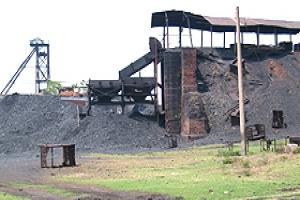- Chandigarh UT
- Creative Corner
- Dadra Nagar Haveli UT
- Daman and Diu U.T.
- Department of Administrative Reforms and Public Grievances
- Department of Biotechnology
- Department of Commerce
- Department of Consumer Affairs
- Department of Industrial Policy and Promotion (DIPP)
- Department of Posts
- Department of Science and Technology
- Department of Telecom
- Digital India
- Economic Affairs
- Ek Bharat Shreshtha Bharat
- Energy Conservation
- Expenditure Management Commission
- Food Security
- Gandhi@150
- Girl Child Education
- Government Advertisements
- Green India
- Incredible India!
- India Textiles
- Indian Railways
- Indian Space Research Organisation - ISRO
- Job Creation
- LiFE-21 Day Challenge
- Mann Ki Baat
- Manual Scavenging-Free India
- Ministry for Development of North Eastern Region
- Ministry of Agriculture and Farmers Welfare
- Ministry of Chemicals and Fertilizers
- Ministry of Civil Aviation
- Ministry of Coal
- Ministry of Corporate Affairs
- Ministry of Culture
- Ministry of Defence
- Ministry of Earth Sciences
- Ministry of Education
- Ministry of Electronics and Information Technology
- Ministry of Environment, Forest and Climate Change
- Ministry of External Affairs
- Ministry of Finance
- Ministry of Health and Family Welfare
- Ministry of Home Affairs
- Ministry of Housing and Urban Affairs
- Ministry of Information and Broadcasting
- Ministry of Jal Shakti
- Ministry of Law and Justice
- Ministry of Micro, Small and Medium Enterprises (MSME)
- Ministry of Petroleum and Natural Gas
- Ministry of Power
- Ministry of Social Justice and Empowerment
- Ministry of Statistics and Programme Implementation
- Ministry of Steel
- Ministry of Women and Child Development
- MyGov Move - Volunteer
- New Education Policy
- New India Championship
- NITI Aayog
- NRIs for India’s Growth
- Open Forum
- PM Live Events
- Revenue and GST
- Rural Development
- Saansad Adarsh Gram Yojana
- Sakriya Panchayat
- Skill Development
- Smart Cities
- Sporty India
- Swachh Bharat (Clean India)
- Tribal Development
- Watershed Management
- Youth for Nation-Building
What type of incentive structure encourages development of requisite skill traits in mining sector?

Start Date :
Jan 01, 2015
Last Date :
Nov 14, 2014
04:15 AM IST (GMT +5.30 Hrs)
The country is well endowed with many metallic and non-metallic mineral resources. India is a leading player in respect of many non fuel minerals including, iron ore, ...


Giving Reservation/Preference to their Ward in mining sector (Employment/ Education as their source of career enrichment ) so that the can feel assured even while working in such a hazards industries.
Partners in Profit with a royalty clause to the genuine land losers till the mining works goes on. The genuineness of the land loser to be based upon their habitats. Say at least occupancy of the land for a period of fifty years or / at least three generations have occupied that land. The royalty and compensation should not be passed on to the latest purchase holder of the land. These clause are essential to avoid 'Land Mafia'
Mining of Manganese Ore. New avenue at Bhat, Shivrajpur, Taluka - Halol, Gujarat
मित्रो नमस्कार मे ग्रामीण क्षेत्र से जुड़ा हूँ ग्रामीण युवाओ को कृषियंत्र सुधारना एवं बनाना, भवन अन्य निर्माण,{मिट्टी,लकड़ी ,बांस धातु आदि की कारीगरी},नल व् विद्दुतफिटिंग्स नल फिटिंग्स मोटर बिन्डिंग आदि कुसलता बदने के प्रयत्न सर्कार द्वारा किया जावे
1.Making mining laborers as partners in profit will be one if the incentive to encourage them.
2.Landless laborers to be allotted some land for their residence
3.Medical facility to be available free. The reason being that lungs of mining laborers get affected and hence free medication is required
PFA my file as it is causing a major hinderance in the mining sector and has to be addressed immediately as it is having adverse effect.
There are several challenges preventing India’s rural masses specially poor people from competing in the modern market, such as the lack of formal education and marketable skills. Government may bridge this gap by funding training projects bench marked to global standards, with an emphasis on placement, retention, career progression and foreign placement etc.
According to Census 2011, India has 55 million potential workers between the ages of 15 and 35 years in rural areas. At the same time, the world is expected to face a shortage of 57 million workers by 2020. This presents a historic opportunity for India to transform its demographic surplus into a demographic dividend.
For skill training modification to formal education stricture is necessary. Formal education which enables a person become good citizen should be completed by the age of 14 years. After this age practical skill development with monitory incentive and studies should go hand in hand. Organisations can help in skill development at initial age level and absorbe skilled work force. Now the training time will be low after engaging and effective work contribution will be more.
The working age of human beings starts around the period when he is full grown say 18 years. and He works effectively up to the age when he starts loosing his near eyesite. It is seen in the work force they the contribution to work is best between the age 25 to 45. My suggestion is that the skill training work should be started at the age of around 14 years with their studies hence they get around 6 to 8 years and perform best in peak working period. Aperantis skill trainees can get stipend .